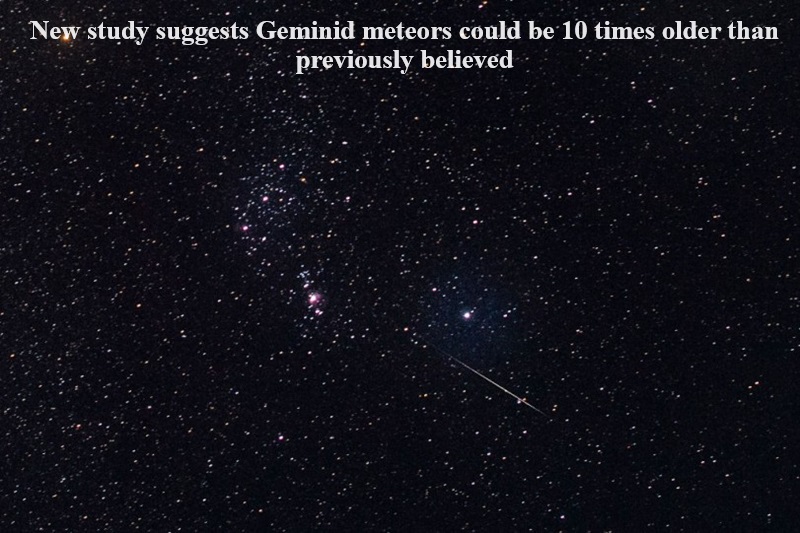
The origin of the spectacular Geminid meteor shower, which graces the night sky annually, has been found to have a tumultuous history, according to a recent study. The findings suggest that Geminid meteoroids are approximately 10 times older than previous estimates, dating back around 18,000 years.
Named after the constellation Gemini, from which the meteors appear to originate, the Geminid meteor shower is associated with an unusual blue asteroid called 3200 Phaethon. This asteroid follows an orbit resembling the path of a watermelon. Phaethon, measuring 3.2 miles wide (5.1 kilometers), has a unique orbit that brings it unusually close to the sun, reaching a distance of just 0.14 astronomical units, roughly one-tenth of the Earth’s distance from the sun. During this orbital phase, Phaethon develops a distinctive comet-like tail.
Traditionally, astronomers believed that the tail was composed of rock fragments, forming the dust cloud responsible for generating the Geminid meteor shower. However, the recent study challenges this theory, revealing that the current particles in the tail are a thousand times smaller than the head-size rocks that make up the Geminids. This discrepancy contradicts the previous understanding of the process.
Recent observations also suggest that the current tail particles may consist of vaporized sodium rather than dust, further questioning the existing theories. Consequently, the cloud of rock responsible for the Geminid meteors must have formed much earlier in history than previously believed, adding a new layer of complexity to our understanding of this mesmerizing celestial event.

Post Your Comments